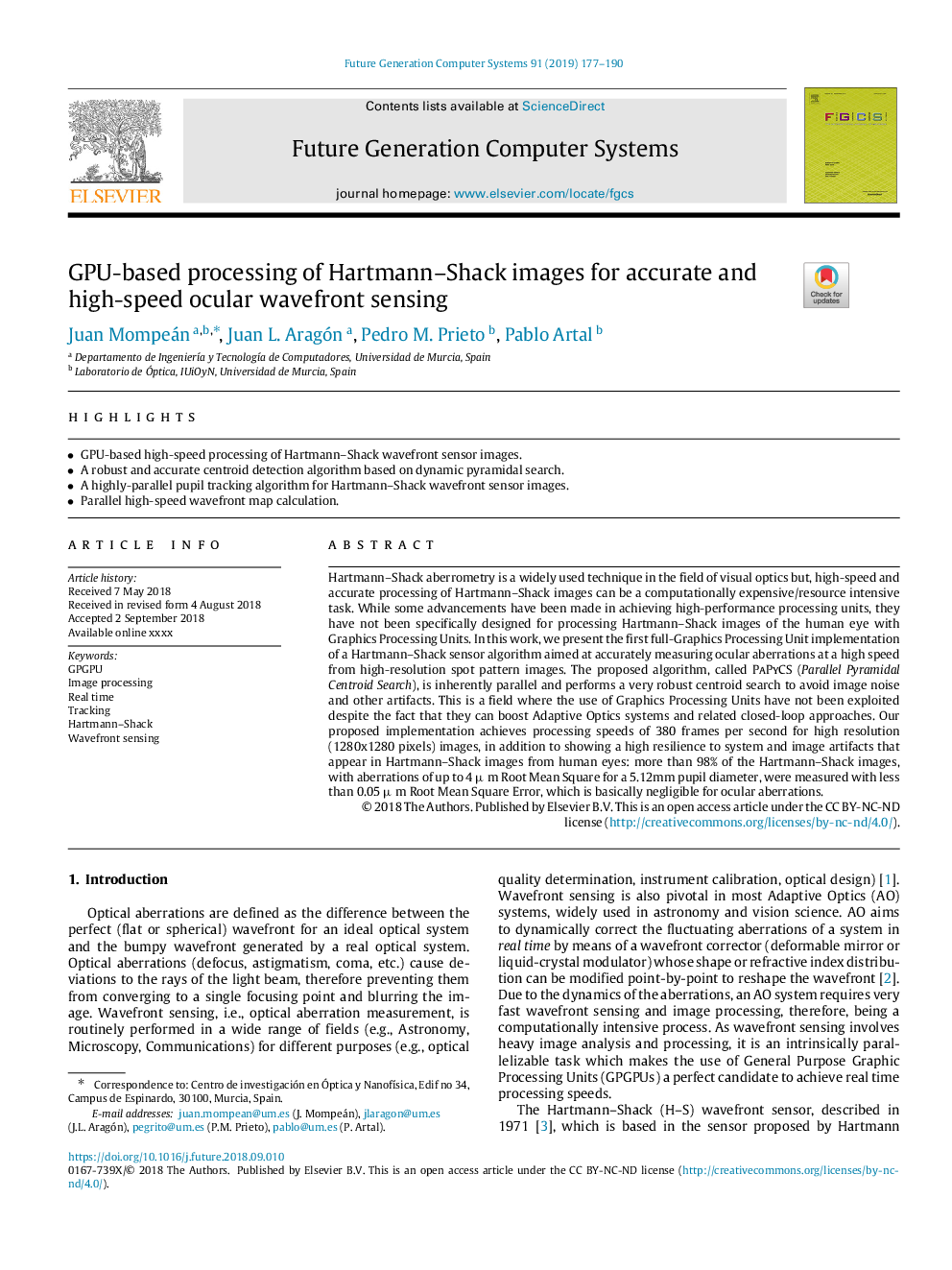| Article ID | Journal | Published Year | Pages | File Type |
|---|---|---|---|---|
| 9951439 | Future Generation Computer Systems | 2019 | 14 Pages |
Abstract
Hartmann-Shack aberrometry is a widely used technique in the field of visual optics but, high-speed and accurate processing of Hartmann-Shack images can be a computationally expensive/resource intensive task. While some advancements have been made in achieving high-performance processing units, they have not been specifically designed for processing Hartmann-Shack images of the human eye with Graphics Processing Units. In this work, we present the first full-Graphics Processing Unit implementation of a Hartmann-Shacksensor algorithm aimed at accurately measuring ocular aberrations at a high speed from high-resolution spot pattern images. The proposed algorithm, called PaPyCS (Parallel Pyramidal Centroid Search), is inherently parallel and performs a very robust centroid search to avoid image noise and other artifacts. This is a field where the use of Graphics Processing Units have not been exploited despite the fact that they can boost Adaptive Optics systems and related closed-loop approaches. Our proposed implementation achieves processing speeds of 380 frames per second for high resolution (1280x1280 pixels) images, in addition to showing a high resilience to system and image artifacts that appear in Hartmann-Shack images from human eyes: more than 98% of the Hartmann-Shack images, with aberrations of up to 4 μ m Root Mean Square for a 5.12mm pupil diameter, were measured with less than 0.05 μ m Root Mean Square Error, which is basically negligible for ocular aberrations.
Related Topics
Physical Sciences and Engineering
Computer Science
Computational Theory and Mathematics
Authors
Juan Mompeán, Juan L. Aragón, Pedro M. Prieto, Pablo Artal,
